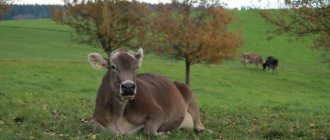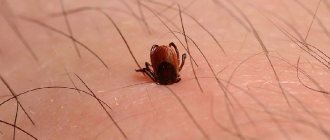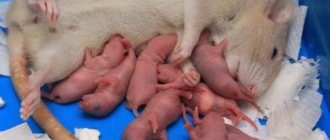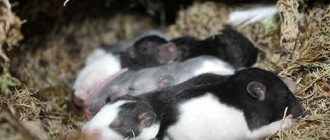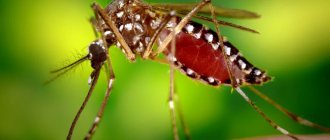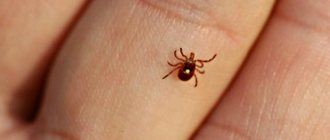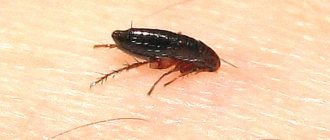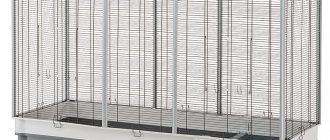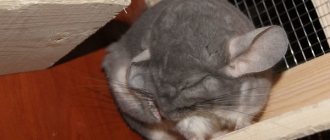Puberty and mating
Most chinchillas experience their first heat at 4-5 months. By this time, the female reproductive system is ready for fertilization. But an incompletely formed organism will not cope with bearing puppies and giving birth. Therefore, early fertilization can lead to the following adverse consequences:
- exhaustion of the female’s body;
- miscarriage;
- birth of stillborn cubs.
Veterinarians recommend that chinchillas begin mating at the age of 8-9 months for females and 6-7 months for males. And in order to minimize complications during childbirth, it is better to postpone the birth of the couple until they are one year old.
It is necessary to carefully prepare for the process of mating animals. First, you will need to introduce potential partners by placing them in 2 cages, standing at a distance of 15-20 cm from each other. When the fluffies get used to the sight and smell of each other, you can briefly place the female with the male.
In the absence of aggression, it is allowed to leave animals together for 3-4 hours a day. By the time of estrus, the couple should become friends. The female's loop will indicate readiness for mating - it will become wet, open slightly and acquire a rich pink hue. At the same time, the behavior of the male will change - he will show signs of attention, make inviting sounds and, most importantly, make attempts to cover the girl. Typically, sexual intercourse in chinchillas occurs at night and lasts only a few seconds.
The fact that everything went well will be signaled by the male’s fur and dried seminal fluid scattered around the cage. To be sure, you can leave the couple together for another 2-3 days.
Chinchilla behavior during pregnancy
The behavior of chinchillas during pregnancy directly depends on their temperament and health. If a woman is young, then pregnancy proceeds normally, and her behavior changes only in the period before childbirth.
Sudden changes in behavior may indicate
- Hormonal changes are temporary and last no more than 3-4 days.
- Stress or discomfort - in this case, irritability, depression, and chronic fatigue are observed. The female is constantly trying to build a canopy or hides in the far corner of the cage.
Based on the experience of owners, the following common behavioral metamorphoses can be identified:
- The female not only begins to eat more, but also actively grazes, even if she was not previously inclined to such behavior.
- Friendly, outgoing women may become territorial and even begin marking.
- Independent women become more social and even obsessive.
Experts advise not to worry about changes in the behavior of pregnant chinchillas unless alarming symptoms are observed.
Try not to force communication and attention on expectant mothers, but be prepared to respond to her initiative.
During a normal pregnancy, a woman's weight gradually increases. Weight gain is due to the production of excess blood and fluids, the growth of embryos and the accumulation of a protective fat layer in the mother's peritoneal area.
Weight gain during pregnancy in chinchillas is 25-30 grams per month. Over the past month, this range could be 30-50 grams. Normal, gradual weight gain is a sign of a healthy pregnancy.
If a woman is healthy at the time of conception, then theoretically the pregnancy should proceed without complications. Temporary problems may arise if the female does not receive the necessary nutrition because the owner does not know that his pet is pregnant. Other possible complications may be related to the quality of care and the environment:
Miscarriage. Most often this is caused by circulatory problems or a so-called blood conflict. Spontaneous miscarriage can occur at any gestational age. Women who are undernourished are at particular risk. Severe or prolonged stress can also be a factor in causing miscarriage.
Injuries, fights, jumping and falling can lead to spontaneous miscarriage. If a woman has a miscarriage, she eats premature embryos and placenta. Quite often, traces of blood remain in the cell (dilution).
Calcium deficiency. If there is a lack of calcium, a woman will have poor quality hair, claws and may have problems with her teeth. The embryos are severely damaged. Puppies do not develop their skeleton and internal organs properly, which can lead to intrauterine death or the birth of offspring with physical disabilities.
Repeated pregnancy immediately after birth. Due to physiological characteristics, a female chinchilla can become sexually active within 36 hours immediately after giving birth. Repeated pregnancy while nursing newborns can lead to the death of the female and puppies.
How to understand that a female is pregnant
In the initial stages, it is very difficult to determine that a chinchilla is pregnant. The first signal about the interesting position of the female can be the so-called vaginal plugs scattered around the cage - the sperm of the male that has dried in the form of flagella. However, this is only an indirect sign indicating the mating of animals. One hundred percent pregnancy can be judged by the following changes in the female’s body:
- Swelling of the nipples . In ordinary life, chinchillas have small pale pink papillae, which are very difficult to find in the animal’s fur coat. In a pregnant pet, the nipples increase in size, turn red, and can be easily found on the abdomen.
- Decreased physical activity . Pregnant chinchillas almost completely refuse active play and prefer to spend most of their free time lying on their side.
- Increased frequency of the urge to urinate . A pregnant female goes to the toilet twice as often in a small way due to the fact that the actively growing uterus puts pressure on the bladder.
- Increased appetite . For normal bearing of offspring, the female needs more energy. Accordingly, she switches to a more saturated diet.
- Absence of appropriate signs during the next estrus . Namely, increasing and moistening the loop.
- Abdominal enlargement . This sign is visible by 7-8 weeks of pregnancy. It is especially noticeable when the animal is in an upright position.
- The surest way is to carry out ultrasound diagnostics or x-rays . These procedures are carried out to ensure that chinchillas are developing correctly.
Also, a few days before the puppies are born, the female’s loop swells and turns red. The male may mistake such changes for the beginning of estrus and cover up the expectant mother. Therefore, 10-12 days before the planned date of birth, it is better to place the boy in a separate cage.
Once pregnancy is established, the female will need to be weighed once a week. Normally, the increase should be 15-20 g. If there are significant deviations from this indicator, as well as in the presence of any suspicious symptoms, the chinchilla will need to be shown to a veterinarian.
A little physiology
The chinchilla's reproductive cycle lasts 28 days. Mating is possible only during 3 days of estrus, when the female’s vagina is open and a special vaginal secretion is released. A couple is usually planted at night. If everything went well and after 30 days there is no new heat, it means that the female is most likely pregnant. However, it is impossible to say for sure, as it is very difficult to determine pregnancy at an early stage. The first sign, as already mentioned, is the absence of estrus. The second diagnostic method is regular weighing. Although in the first two-thirds of pregnancy the female slowly gains weight, in the last month the female rapidly gains weight. Another sign of pregnancy is that 8 weeks after erection, significant swelling of the nipples is observed. But the most accurate method is, of course, ultrasound or x-ray. Ultrasound examination allows you to accurately determine pregnancy in the early stages, but it is impossible to say exactly how many babies there will be. X-ray examination can be carried out only towards the end of pregnancy, when the babies’ skeletons have ossified, then the chinchillas can be counted.
Caring for a pregnant woman
In order for pregnancy and childbirth to proceed without complications, the expectant mother will need to create comfortable living conditions. To do this, just follow the following recommendations:
- Ensure complete peace in the room with the cage. The female should not be disturbed by loud noises or unexpected guests. You also need to make sure that the cage is not exposed to direct sunlight and that the room is not hot.
- Remove the running wheel, shelves, ladders, and hanging hammocks from the cage - this will protect your pet from falls. It is also better to remove the tunnels, since the female can get stuck in them.
- Clean the cage daily. In unsanitary conditions, the animal can get sick, as a result of which future babies will suffer.
- Introduce more high-calorie foods into the expectant mother's diet - cereals, fruits, vegetables, dried fruits. And also protein dishes (kefir, yogurt, crumbly cottage cheese).
- Provide your pet with warm bedding in the form of hay or wood filler.
Additionally, you will need to limit tactile contact with the pregnant chinchilla. If there is no need, you should not pick her up or let her out of the cage for a walk.
Particular attention will have to be paid to the health of the female. Ideally, during pregnancy she should undergo 2-3 routine examinations at the veterinary clinic. This includes an x-ray, which will help determine the number of babies and their presentation, as well as identify possible problems.
A pregnant chinchilla should never be lifted by its tail. This will become a real stress for her and can provoke premature birth.
Chinchilla birth chart
To calculate the day of expected birth from the date of conception, there is a simple pregnancy and birth table for chinchillas, which includes the average gestation period of exotic rodents with an error of up to an error.
The table has an error of 1 to 4 days due to the lack of a clear pregnancy date for female chinchillas. The table consists of oblong columns with the top row corresponding to the calendar date of mating and the bottom row corresponding to the predicted day of the upcoming birth. For example, with a successful insemination on June 1, the breeder should expect furry offspring around September 19.
How long does pregnancy last
Depending on the individual characteristics of the female’s body and the number of puppies being carried, a chinchilla’s pregnancy can last from 105 to 120 days. In young females, gestation is longer. This is due to the fact that the fewer babies a chinchilla has, the longer it bears them. And in the first litter, as a rule, there are no more than 2 puppies. Then the chinchilla mother is pregnant for 115-120 days.
Older females can give birth to 5-6 babies at once. And their gestation period is only 100-105 days. It is worth noting that during multiple pregnancies, newborns are born with closed eyes and a small amount of fur. While chinchillas from a small litter, as a rule, are immediately sighted, stronger and covered with thick fur coats.
What to feed a chinchilla after giving birth
The diet of a lactating female should contain increased amounts of protein and calcium necessary to produce the required amount of milk. The chinchilla must be fed with wheat, oat and barley sprouts, nettle grass, alfalfa, vetch, rose hips, vegetables, fruits and nuts.
The introduction of cottage cheese, skim or powdered milk, kefir, yogurt, sour milk, meat and bone meal, milk granules, vitamins, calcium gluconate and berries into the diet should be mandatory.
Milk production is accompanied by increased thirst of the woman, so the owner must be vigilant and take care of pouring the drink. The feeder and water bowl should be located as close to the nest as possible so that the chinchilla can easily reach the nest.
Selecting a mating pair, caring for a pregnant female and her future offspring, as well as assistance during childbirth is a serious and troublesome job, especially for novice chinchilla breeders. All efforts are compensated at first glance by tiny, touching chinchillas, which are born immediately with soft, delicate fur and open, curious eyes, unlike other mammals.
Symptoms and duration of pregnancy and childbirth in chinchillas4 (79.23%) 26 votes
Preparing for childbirth
The approach of childbirth in a chinchilla can be judged by several signs. The most important thing is that the female shows unreasonable anxiety and becomes restless. If the male is not resettled by this point, the expectant mother will begin to attack him.
Also, by the time labor begins, the chinchilla will begin to build a nest. To do this, she will drag straw to the chosen place and pull out her own wool, which will act as “insulation.” At the time of building the nest, the pregnant female becomes very tired, so she will sleep more often and lie on her back.
Shortly before the planned date of birth, you will need to perform several mandatory actions:
- remove the male;
- cover the cage with the female with a breathable cloth;
- fill the drinking bowl with fresh water;
- If there are recommendations from a veterinarian, prepare the necessary medications in advance.
If the chinchilla did not take care of arranging the nest before giving birth, you will have to help her. To do this, it is enough to buy a warm house or insulate your pet’s favorite place with chopped straw.
If the pregnancy was difficult, you can arrange in advance for the presence of a veterinarian at the birth to be on the safe side.
What to feed a pregnant chinchilla
Women who carry their calves need high quality and fresh feed.
Food products should be added to the menu:
- Crushed plants (alfalfa, calendula and strawberries) plus feathers for good lactation;
- Barley or oat cabbage, due to the presence of vitamin E (its deficiency causes fetal malformations or miscarriages);
- apple slices 15-20 days before delivery;
- special food from a veterinary store with a high protein content, for better lactation and light juiciness.
Dietary supplement with herbs, milk powder and cereal mixture, rose hips. In addition, calcium gluconate is prescribed to support the skeletal system.
Thyme and mint have a negative effect on lactation and should be avoided. Also reduce roughage (corn cobs, straw and hay) by about a quarter and increase the amount of juicy fruits, vegetables and protein (cottage cheese, yogurt, meat and bone meal, etc.).
Birth of puppies
Immediately on the day of delivery, the chinchilla becomes very restless. She flinches at every rustle, refuses to eat and sits in the prepared nest. When childbirth occurs, the female stands on her hind legs, resting her front legs on the bars of the cage. In this position it is easier for her to push the babies out.
As the puppies emerge, the female licks them and eats the afterbirth. Since the cubs can quickly freeze and get sick with wet coats, they immediately hide under their mother’s warm tummy. If a dead puppy is found, it will need to be removed immediately. Otherwise, the woman in labor may experience stress and refuse to feed the rest of the babies.
A few hours before giving birth, a chinchilla may experience so-called false contractions. During this process, she stands on her hind legs, her ribs are strongly retracted, and her stomach contracts.
As a rule, healthy females cope with the birth process on their own. After which they quickly recover. However, you should not place a male with a young mother for another 5-6 months - this period of time is necessary to fully restore strength and prepare the body for a new pregnancy.
How is childbirth?
Chinchillas usually give birth very quickly. A female chinchilla usually gives birth to 1 to 4 young, and the entire birth period lasts from a few minutes to 2-2.5 hours. After giving birth, the chinchilla eats it.
If there are no deviations in the process, the animal does not need help. Any unnecessary touching, examination, or attempts to encourage the puppies to move through the birth canal can cause stress in the female, which blocks the release of oxytocin and stops contractions.
Maternal distress occurs in chinchillas that are too young or injured, as well as in individuals with abnormal presentation of one or more fetuses.
Often females that were previously used for breeding and are forced to produce offspring more than twice a year have difficulty giving birth to children. If you suspect any abnormality, contact your veterinarian.
If your chinchilla has already developed maternal diseases, it is necessary to arrange a home visit with your veterinarian in advance.
Signs of approaching labor
The fact that a woman is preparing for childbirth can be judged by her behavior. The chinchilla begins to build a nest: she chews the garbage to make it softer and puts it in the most closed corner.
Some animals pluck fluff on the belly and sides, and also line the nest. Preparing the birth site usually takes 2-4 days. The woman gradually becomes less active, lies on her back most of the day, stops eating and barely moves.
This behavior is normal and should not be a cause for concern. It is worth noting that the weight of a chinchilla can decrease by 15-25 grams when weighed immediately before the birth of the child.
A few days before giving birth, the female begins to stretch or become flabby. This encourages young people to move towards the birth canal.
Not only the behavior, but also the appearance of the woman changes. As the puppies move toward the pelvic outlet, the chinchilla's abdomen lowers, the sides droop, and the genitals become more pronounced and swollen. When measuring body temperature in the rectum, a decrease of 1-1.2°C is noted.
How to prepare for giving birth to a chinchilla?
After your chinchilla is mated, mark this date on your calendar and count 105-115 days from it to prepare in advance for the expected delivery date. In a notebook, write down your weight measurements, pregnancy behavior, and any important or worrying questions. If your pet is restless, not eating well, or is gaining weight, consult your veterinarian in advance. Make sure you have his number in your phone or write it down on your laptop to keep track of your pregnant woman.
For your birthday, it is recommended to have clean diapers, hydrogen peroxide, sterile syringes, saline solution and milk replacer ready. There should be a sufficient amount of clean water in the female's cage.
Have disposable diapers or soft wipes on hand during delivery. In case of multiple pregnancy, you can help the female by gently wiping the newborn calf with them.
How to help a chinchilla during childbirth?
Childbirth in chinchillas usually begins in the morning hours, around 5-7 am. In the normal course of the process, puppies are born within 9-10 hours. About 24 hours after birth, the female begins lactation.
Before this, the colostrum is released from the nipples. It is whitish in color and is nutritious enough to provide the juveniles with essential nutrients for the first 24 hours.
If abnormalities are suspected during childbirth, the chinchilla should be assisted. Due to loss of strength, the chinchilla is restless, creaks, or reacts sluggishly to external stimuli.
If a birth lasts more than 5-6 hours, there is heavy bleeding from the genital tract, or contractions stop, you should consult a doctor. In this case, surgical intervention is necessary, i.e. C-section.
If the birth is going well, there is no need to interfere with the process.
Caring for the mother and babies in the first days
After giving birth, the chinchilla must restore lost energy and moisture; for this, the cage must have clean, cool water and hay. In the first few days, you can feed the female with thick sugar syrup and a small piece of apple. In case of a lack of water, vitamins and microelements, the female may bite the young.
After the female leaves the nest, use clean hands to inspect the chicks and remove any dead newborns from the cage. The procedure should be carried out with clean hands, washed with laundry soap; the smell of toilet soap will frighten the female, and she can kill the young man.
If some of the young chinchillas remain on the floor of the cage outside the nest, the owner must immediately resuscitate the newborn. They should be dried, warmed and fed artificial milk formula via a dropper. After these steps, the young are carefully placed in the nest under the mother.
A day after birth, the newborn puppy should be taken out with clean hands and weighed each time; the normal weight of the child should be 30-70 grams. Subsequent weighing should be carried out daily, preferably at the same time.
If there is sufficient production, puppies will receive at least one gram per day, otherwise additional infant nutrition is necessary.
If a chinchilla does not produce enough milk to feed its offspring, this manifests itself in the loss of mobility of the babies and lack of swelling in the mother's nipples. In this case, the owner should feed the newborn puppies with diluted condensed milk or cow's milk.
At 30 days of age, puppies are weaned into warm, spacious cages, forming mixed sex groups. Young puppies should be fed boiled cow's milk for up to 5-6 months.
Breast examination
The owner should examine the mammary glands of the caring chinchilla daily. Newborn puppies are born with teeth erupted and can damage the delicate skin of their teeth.
If wounds or cracks are found on the nipples, the damaged areas should be lubricated with Vaseline or lard. If the mammary glands are not efficient enough or the third pair of nipples are filled with milk, mastitis can occur. To avoid this, the remaining milk should be kept taut and a moist bandage applied to the hot, swollen glands.
If the female has hardened nipples, she will trample and open the young. The woman is taken out of the cage, her nipples are massaged, a small amount of milk is given, she is held in her arms, and the young are sucked.
Possible problems and complications
In most cases, childbirth in chinchillas occurs without complications, and young mothers themselves cope well with the birth of their babies. The average duration of the labor process is 2-3 hours. If the birth lasts up to 5 hours, the female needs help. Perhaps one of the puppies is stuck in the birth canal. To provide assistance you will need:
- give the woman in labor a few drops of sweet water or syrup - this will help restore the chinchilla’s strength and give it vigor;
- Gently massage the tummy - in this case you need to use soft, stroking movements and under no circumstances press;
- If one of the puppies is halfway out and does not move further, you need to lubricate its body with Vaseline and try to carefully remove it in time with the contractions, twisting it slightly clockwise.
If labor has completely stopped, or if bleeding occurs, it is necessary to urgently take the chinchilla to the veterinarian. If possible, it is better to call a specialist at home. In such a situation, a caesarean section will have to be performed to save the lives of the mother and babies.
Is it possible to touch newborn chinchillas?
To examine babies after birth, wash your hands thoroughly with laundry soap to avoid infection. Any other agent will leave an odor that the mother perceives as foreign, and there is a risk that she will stop feeding or even bite the babies.
At first, try to handle the babies as little as possible, and don’t forget to wash them. It is best if only the owner does this to avoid odors and the possibility of infection or injury to the tiny animal. When the cubs are a month old, interaction with people will benefit them: in the future they will become social and affectionate.
Rules for handling newborn puppies
It is worth providing comfortable conditions for the mother and puppies after birth. Also, the female needs, as before, adequate nutrition and water. After the chinchilla leaves the nest, you should examine the babies with clean hands and remove any dead ones, if any.
ATTENTION! Hands should be washed only with laundry soap. The smell of fragrances can frighten the female and provoke the destruction of the offspring. A sand bath can be installed two weeks after birth. It is better for the male to live separately for a few more months.
Puppies can eat hay and apples on the third day. After birth, puppies must be weighed. Normally, the weight of cubs varies from 30 to 70 grams. They are planted at one month of age.
How to breed chinchillas: raising young animals
- If the birth went well, there are no postpartum complications, the first weeks after birth the cubs feed only on mother's milk. It contains all the necessary nutrients for their development and antibodies for the formation of reliable immunity.
- The amount of milk in a healthy female depends on what food she receives, so the female should be provided with the highest quality food. Towards the end of the first month, chinchilla babies begin to try solid foods, although milk is still their main food.
- Babies are separated from the female at the age of two months, when they are already fully accustomed to feeding on their own. With a large litter, chinchillas are removed gradually, starting with the largest and strongest. So that the female’s lactation gradually decreases and mastitis does not form.
- Some individuals can reach sexual maturity as early as four months, so by this age females and males are placed in separate cages to avoid accidental covering.
- By the age of six months, the main development of the cubs ends, they are covered with full fur and you can decide what to do with them next - offer them for sale or select a pair for them in order to breed chinchillas again from a new pair.
If artificial feeding is necessary
Chinchilla gave birth - your actions
- It happens that a new mother leaves her puppies on the floor. Since they are born wet, it is necessary to dry them and wrap them in a warm cloth. Also, take care of the food, for this you can use an artificial milk formula; you need to feed it using a pipette. After you have completed all these important steps, the babies need to be placed under their mother’s tummy, where they will be warm and cozy.
- After 5–6 hours, the puppies must be examined. Look at the anus of each individual. If the baby has performed an act of defecation, it means that traces of primary feces will remain on the fur near the anus. If intestinal peristalsis is absent in a newborn in the first day of life, this may well lead to the development of inflammation of the anus, and possibly intestinal prolapse.
Important. You should not stop the inflammatory process on your own or try to reset prolapsed intestinal loops. The baby urgently needs professional help, go to the vet.
Source
What you need to know to breed chinchillas
You should choose only strong and healthy chinchillas; only they will be able to produce good offspring for a long time. The second factor is beauty, it is important to take cute animals that people will buy with great desire. Beautiful parents will have beautiful babies.
Choose chinchillas with a thick and long coat, because their beautiful fur is why they are valued.
Cubs are born with their eyes open and they can see everything. They also have teeth and hair. A few days after birth, they are already able to feed themselves, but in order for them to grow properly they must be fed from their mother for 70 days. When the due date comes and the cubs have reached a weight of 200-300 grams, they can be placed in another cage and fed on their own. Until chinchillas are 100 days old, it is better not to give them to new owners; first you need to make sure that you separated them from their mother on time and that the animal does not have any diseases.
Do not forget that it is unacceptable to mate chinchillas from the same family. This will lead to unhealthy offspring.
Readiness for mating (estrus)
Like many animals, female chinchillas have a period of estrus (hunting) when they are ready to mate and, moreover, desire it. On average, estrus lasts from 2 to 5 days, then the mating process may become unsuccessful.
Determining whether a chinchilla has started hunting is not difficult. Her behavior gives her away very much; she begins to throw everything around and creates complete chaos in her cage. Along with active behavior, the female eats very little or not at all.
The second sign is external signs. The genitals swell and become bright pink.
Diseases in female chinchillas
Firstly, it is men who often infect women with sexually transmitted diseases because they are carriers of viruses.
Although breeders will tell you what to look for when purchasing a chinchilla, be sure to quarantine it and if you don't have a veterinarian's note, check with your doctor to see if it has any medical conditions.
The following diseases do not occur and cannot be detected in men except through laboratory tests: endometrial cystic gland hyperplasia, vaginitis, endometritis (including chronic), pyometra
After childbirth, women sometimes experience uterine prolapse. If this happens, call your veterinarian immediately.
